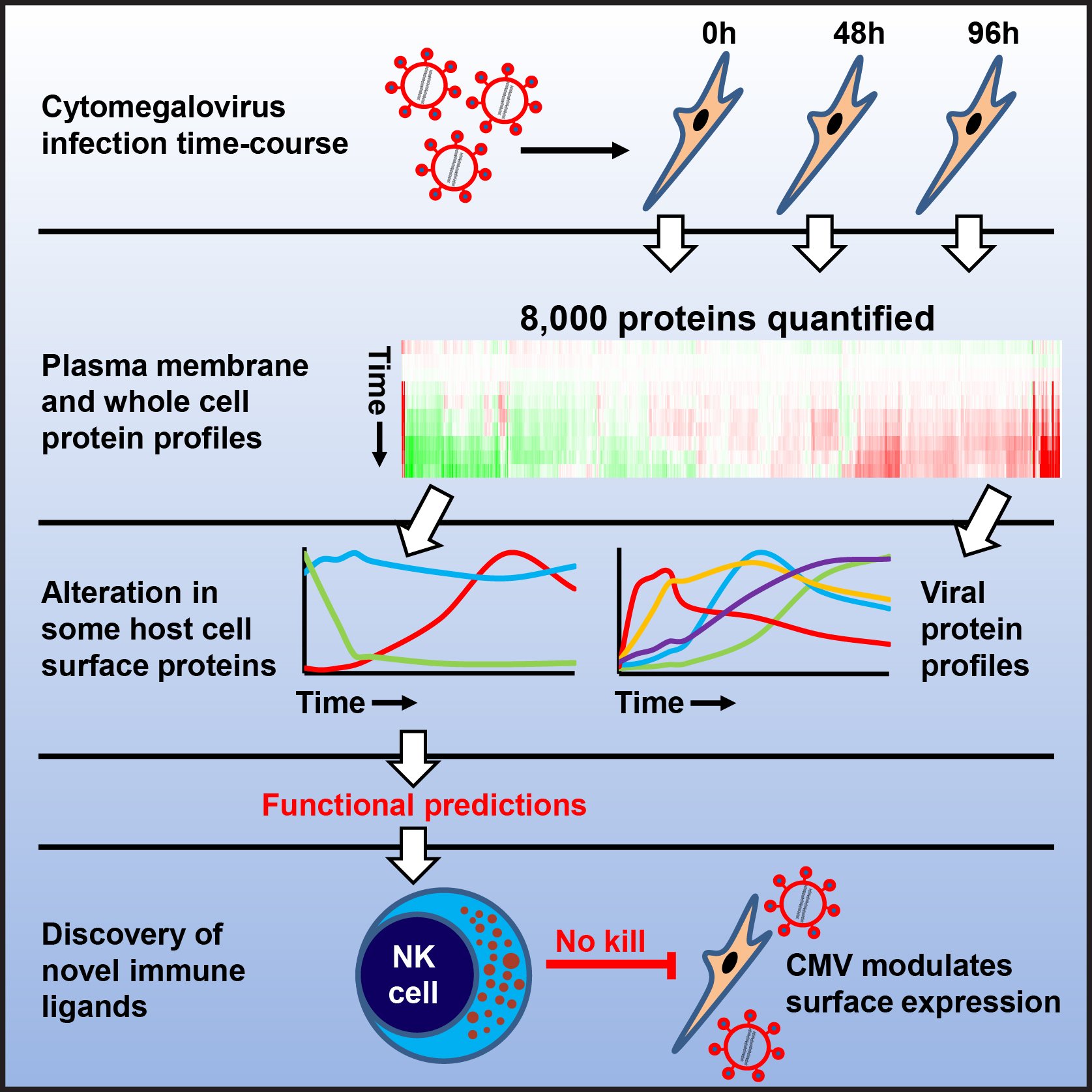
A systematic quantitative analysis of temporal changes in host and viral proteins throughout the course of a productive infection could provide dynamic insights into virus-host interaction. In a recent article in Cell, the Gygi Lab describes a novel proteomic technique, ‘quantitative temporal viromics’ (QTV), employing multiplexed tandem mass tag-based mass spectrometry. They apply this technology to human cytomegalovirus (HCMV), not only an important pathogen but a paradigm of viral immune evasion. QTV detailed how HCMV orchestrates the expression of >8,000 cellular proteins, including 1,200 cell surface proteins, to manipulate signaling pathways and counter intrinsic, innate, and adaptive immune defenses. QTV predicted novel natural killer and T-cell ligands, as well as 29 viral proteins present at the cell surface--potential new therapeutic targets. Temporal profiles of >80% of HCMV canonical genes and 14 non-canonical HCMV ORFs were defined. QTV is a powerful, novel method that can yield important insights into viral infection, and is applicable to any virus with a robust in vitro model. This work was in collaboration with the Wilkinson Lab (Cardiff University, UK) and Lehner Lab (Cambridge University, UK).
Figure: schematic of QTV strategy, as applied to HCMV.